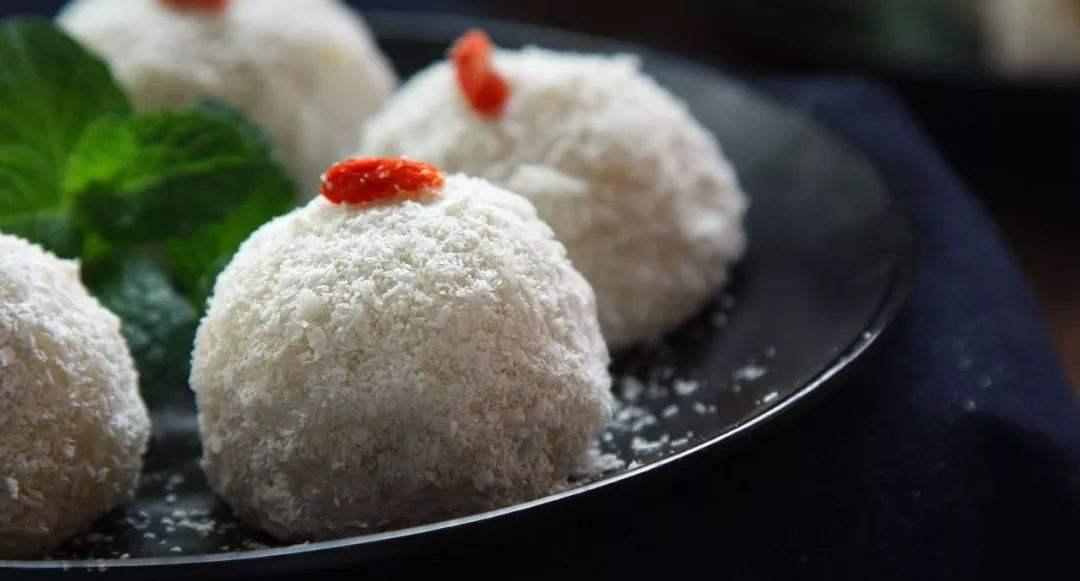Three big money to buy good flowers, cut cake ghost legs chatter, early in the morning a bowl of sweet pulp porridge, only to eat tea soup and noodle tea; cold fruit cake fried sweet ears, hanging stove burn cake Ai Wo Wo Wo Wo, fork fire just sold, and listen to hard noodles called dumplings; roasted wheat wontons are lined up on the plate, newly added hanging powder good tangyuan ... Do these old Beijing snacks from childhood still make you remember it vividly?

<h1 class="pgc-h-arrow-right" > Aiwowo </h1>
Aiwowo, a traditional Beijing snack, is a halal snack made of glutinous rice, which is characterized by its snow-white color, ball-like shape, soft texture and sweet taste. Not only do Beijingers love this snack, but even foreigners who enter Beijing often have to taste this nationally famous halal snack. Every year around the Lunar New Year, Beijing's snack bars have to sell this variety until the end of summer and early autumn, so Aiwowo is also a spring and autumn variety, and now it is available all year round.
There are two sources of Aywowo. The first is of Han origin. At first, it was a yuan dynasty court dim sum, and later gradually introduced to the people. Folk Huihui white case cooks are constantly processed and gradually improved, forming Aiwowo. The second is derived from Uyghurs. It was the craftsmanship of the Uighur White Case Master brought from Xinjiang by Emperor Gaozong Qianlong's concubine Xiangfei, and gradually introduced to the people.
Aiwowo has a long history, and Liu Ruoyu, the internal supervisor of the Ming Dynasty, said in his "Zhi Zhongzhi": "Take glutinous rice with sesame seeds as a cold cake, and the pills and stuffing as a nest, that is, the ancient 'no falling clip' is also." "
It can be seen that this kind of food is washed and soaked with glutinous rice, then steamed in a cage drawer, cooled and kneaded, rolled into a small agent, pressed into a round skin, wrapped with peach kernels, sesame seeds, melon seeds, green plums, golden cakes, white sugar, mixed into filling, it has become a food called nest during the Ming Dynasty. But why did it become Aiwowo later? An explanation was found in the qing dynasty Li Guangting's book "Explanation of The Township Proverb". For there was an emperor who loved to eat this kind of nest, and when he wanted to eat it or wanted to eat it, he commanded, "Imperial Nest." Later, this kind of food was introduced to the people, and the ordinary people could not and did not dare to say the word "Royal", so the word "Royal" was omitted and called "Aiwowo". This snack has flowed into the folk in the Ming Dynasty, and in the Ming Dynasty's "Golden Bottle Plum" recorded that one of the popular delicacies at that time was Aiwowo.
The glutinous rice used in the outer skin of Aiwowo is steamed, and the filling is also fried in advance with peach, melon, sesame and sugar, so it can be eaten after cooking. Therefore, in the "Yandu Small Food Miscellaneous Songs", it is said: "White powder rice into the steamer, assorted stuffing powder noodles." It is like a tangyuan that does not wait to be boiled, and halal is called Ai Wo Wo Wo. It also notes: "Ai Wo Wo, one of the foods sold by hui people, is steamed through the extremely rotten rice, to be cold wrapped in various fillings, and made into a circle with flour balls, varying in size, depending on the price, and can be eaten cold." "